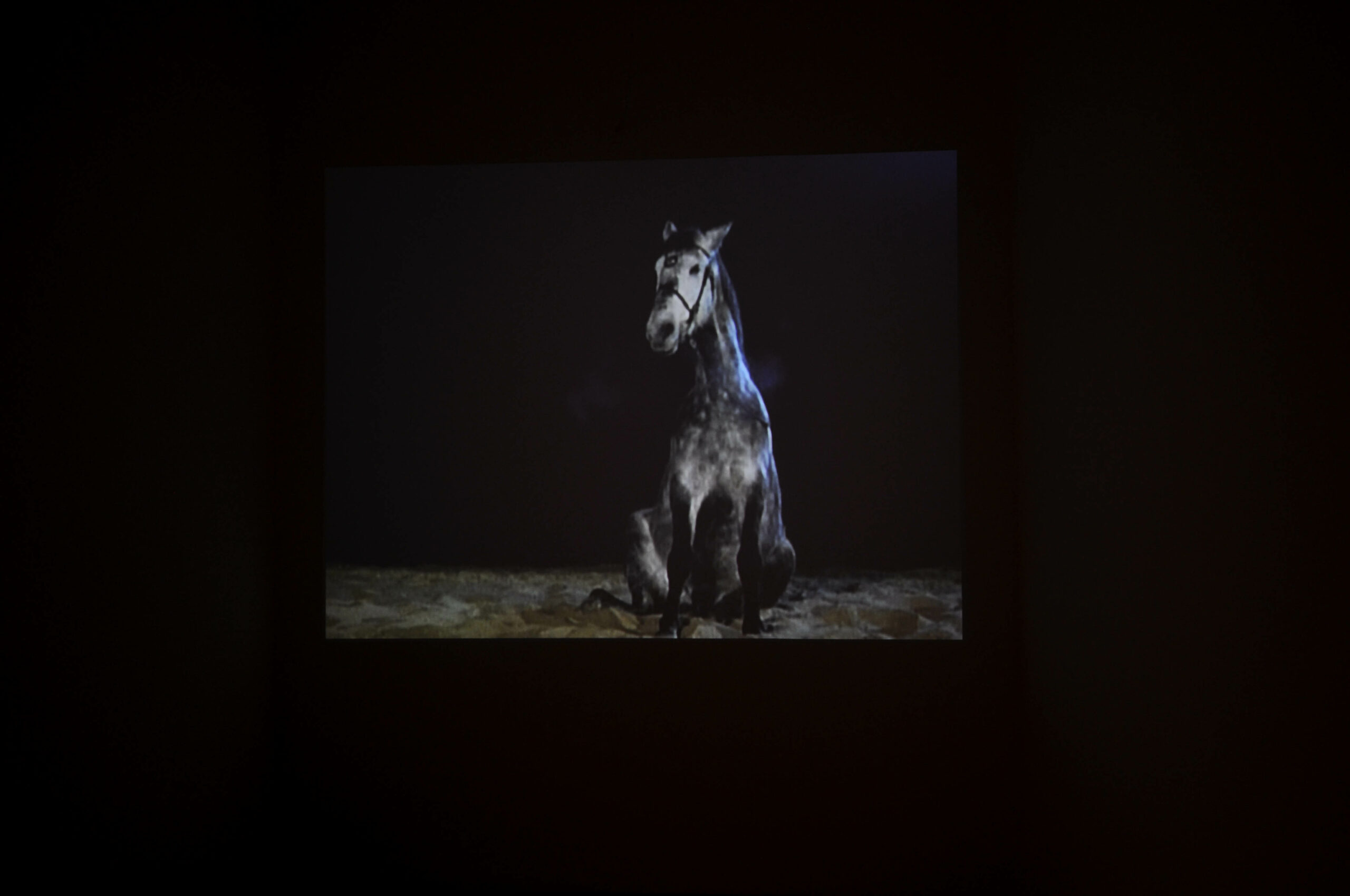The theme “Horses and Riders” is the subject of two parallel exhibitions curated by Lorenzo Giusti, director of the MAN Museum, and Alberto Salvadori, director of the Marino Marini Museum. A profoundly Sardinian theme expressed, on the one hand, by the artist of our twentieth century who represented it more than anyone else, Marino Marini, and on the other through the gaze of some contemporary artists, authors of video works in which the theme of knight is reread in a current key, according to different points of view and perspectives which, in the project as a whole, constitute a sort of critical text in images.
Post Scriptum
Conceived as a project parallel to Marino Marini’s exhibition and at the same time independent, the “Postscriptum” exhibition presents video works created in the last ten years by Italian and international artists: Tania Bruguera (Cuba, 1968), Alberto De Michele (Italy, 1980), Pietro Mele (Italy, 1976), Anri Sala (Albania, 1974), Carolina Saquel (Chile, 1970), Nedko Solakov (Bulgaria, 1957), Salla Tykkä (Finland, 1973). The selected works, although different from each other in language, sensitivity and purpose, share the reference to the figures of the horse and the rider, subjects still capable of evoking precise suggestions and becoming privileged interpreters of the present reality.
Tania Bruguera’s slideshow is a simple documentation of the performance created in 2008 in the Turbine Hall of the Tate Modern in London and replicated in Ljubljana and Cardiff. Fifth part of the Tatlin’s Whisper project, the work consists in the application of some techniques
control of the masses by mounted police forces. The traditional image of the knight – and what is usually associated with this image in terms of magnificence and value – is here deconstructed through a process of decontextualization. The experience causes the viewer to reflect on the limits of authority and power in civil society.
Alberto De Michele’s work, Indomita Jet vs Dardo Coca (2010), illustrates the phenomenon of illegal horse racing in Southern Italy. Using his family members as actors, De Michele organizes a competition in his father’s birthplace (Catania) and films the action using multiple cameras. The horse race is shown in different shots to simulate the mode of transmission done on the screens of gaming halls, frequented
by regular bettors.
In Ottana (2008) by Pietro Mele, the camera frames an initially unrecognizable glimpse of the countryside. After a few minutes a figure on horseback bursts onto the scene, proceeding slowly forward. This is followed by others, which accompany the slow vertical movement of the camera, gradually revealing the identity of the place in which the scene takes place. This is the petrochemical center of Ottana, in Sardinia, whose fumes and appearance contrast with the archaic image of the man on horseback and with the natural context in which the site is located. A reflection on the complex relationship between nature, living beings and progress.
In Anri Sala’s video, Time after time (2003), a horse is trapped on the side of the road in a big city. The slowness of the movements and the thinness of the horse contrast with the speed of the lights of the cars and trucks, which speed by regardless of the animal. A disturbing image
and moving, whose strength is amplified by the fixity of the video camera, which reflects on the conflictual relationship between nature and progress and on the sense of alienation in contemporary society.
Carolina Saquel’s video, Pentimenti (2004), presents a timeless scenography. Against an indistinguishable background, in the middle of an expanse of sand, a horse performs movements on the rider’s orders, moves from right to left and vice versa, passes in front of the camera and stops to perform the exercises. The orders are not pronounced directly by the jockey, but by a voice-over that describes the development of the action, as if it were a synthesis of the “dialogue” between the two protagonists.
In Knights (And Other Dreams) Nedko Solakov gives vent to his obsession with narration, the mechanisms of fairy tales and the development of childhood and adolescent fantasies. Created between 2010 and 2012, the work was presented as a multimedia installation at the latest edition of Documenta. In a series of video works and in other works Solakov retraces the myth of the medieval knight, rooted in collective memory, making it dialogue with modernity, inserting it in contexts in which the sense of fiction is evident. In episode #8, The Three Drummers and the Knight, the artist realizes two of his greatest boyhood dreams: being a knight and playing drums in a rock band.
Salla Tykkä’s video, Airs Above the Ground (2011), tells the story of the fate of the Lipizzan horses. One of a kind, these horses are born gray to become white as adults and are subjected to very harsh training that forces them to perform a dance of unnatural movements, called “dressage”. The meaning of this work is all in the vision of a presumed beauty that clashes with the breathlessness and breathing of the horse under stress. Freedom, beauty and perfection are only “a priori”, abused and emptied of real meaning.

